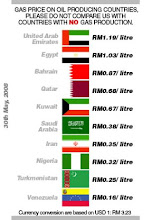Punjabi (sometimes spelled Panjabi) is the official language of the Punjab regions of India and Pakistan. It is an Indo-European language of the Indo-Iranian subfamily. Also, as an adjective, the word Punjabi qualifies anything or anyone that is related to either Punjab or the Punjabi language, such as the speakers of Punjabi, inhabitants of the Punjab or the Punjabi cuisine of the region.
Punjabi is the official language of the Indian state of Punjab, and is also spoken in neighbouring areas such as Haryana and Delhi. In Pakistan, however, it is not an official language and has no official status in education. In formal contexts, such as government, newspapers, and education, as well as in most writing, Pakistani Punjabi speakers tend to use Urdu and English, which are the nation's official tongues. This has led to resentment from many Punjabi speakers, who form the largest single linguistic group in Pakistan (i.e. about 50% of the total Pakistani population, or above 60% if we include the closely related Punjabi dialect 'Siraiki', spoken in and around the historical city of Multan).
Punjabi is also spoken as a minority language in several other countries, including Afghanistan, as well as many nations where Punjabis have emigrated in large numbers, such as Britain, the United States and especially Canada where its the 6th largest language with 271 220 people using it on a daily basis. Punjabi is the sacred language of the Sikhs, in which the religious literature is written (See Adi Granth). It is the usual language of Bhangra music, which has recently gained wide popularity both in South Asia and abroad.
Punjabi culture, much like its Bengali counterpart, suffered a split between India and Pakistan during the Partition of 1947. As such, Punjabi language and culture tend to be uniting factors in spite of national and religious affiliations.
Modern Punjabi has borrowed extensively from other languages, including Hindi, Urdu, Persian and English. Like other North Indian languages, it is derived from Sanskrit and is therefore Indo-European. In addition, like Hindi and Urdu, it has a substantial number of loanwords from Arabic, Persian, and even a few from Turkish. Many sources subdivide the Punjabi language into Western Punjabi (Lahnda) and Eastern Punjabi.
There are several different scripts used for writing the Punjabi language, depending on the region and the dialect spoken, as well as the religion of the speaker. Sikhs and others in the Indian state of Punjab tend to use the Gurumukhi or Gurmukhi (from the mouth of the Gurus) script. Hindus, and those living in neighbouring states such as Haryana and Himachal Pradesh sometimes use the Devanagari script. Finally, Muslims, and in general Pakistani Punjabis, use a modified Arabic script called Shahmukhi(from the king's mouth). Shahmukhi script is almost like Urdu.
Much like English, Punjabi has moved around the world and developed local forms by integrating local vocabulary. While most loanwords come from English, Hindi and Urdu (and indirectly, from Persian and Arabic), Punjabi emigrants around the world have integrated terms from such languages as Spanish and Dutch. A distinctive "Diaspora Punjabi" is thus emerging. As there is no formal consensus over vocabulary and spelling in Punjabi, it is likely that Diaspora Punjabi will increasingly deviate from the forms found on the Indian Subcontinent in the future.
Tuesday, April 14, 2009
Subscribe to:
Post Comments (Atom)




















1 comment:
Rakhveer,
Excellent site. Would you like to submit an article to the International Journal Against Injustice (IJAI)? This blog on Punjabi would be excellent. You can find it at
http://www.johnmaszka.com
while your there, please voice your opinion in our worldwide survey on international terrorism.
http://www.johnmaszka.com/SURVEY.html
John
Thanks!
Post a Comment